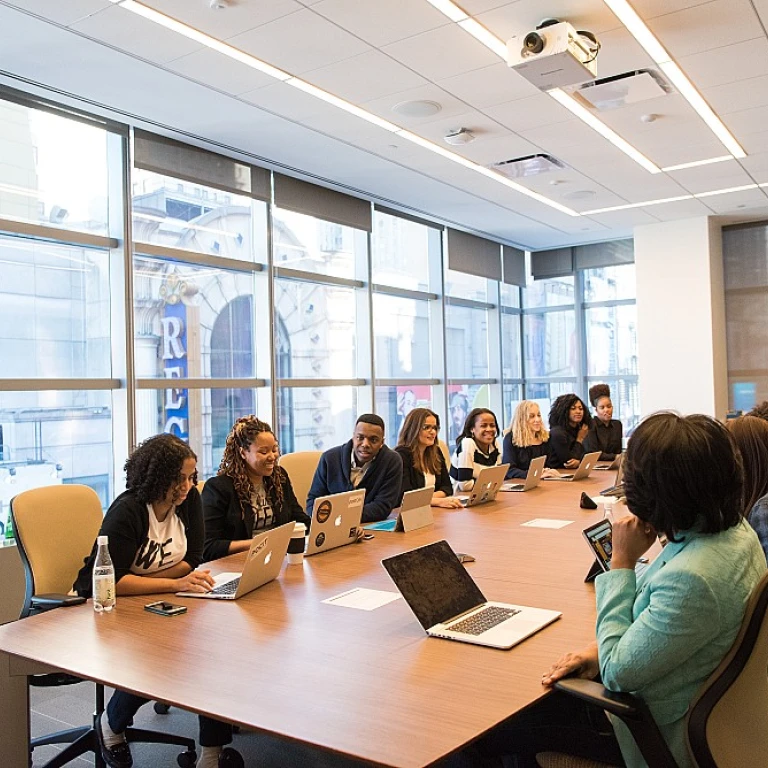
Understanding the Role of College Training in Continuous Learning
The Value of College Training in Continuous Education
College training plays a pivotal role in continuous learning by equipping students with the necessary skills to thrive in an ever-evolving professional landscape. As students transition from high school into higher education, they encounter a myriad of opportunities for skill enhancement and personal growth. Whether attending a community college or enrolling in a specialized training program, the impact of higher education on skill development is significant.
Higher education institutions offer diverse programs that cater to various career paths and interests. These programs are designed to foster professional development by incorporating both theoretical knowledge and practical application. Students gain college credit and valuable skills training, essential for navigating today's competitive job market.
One of the most significant advantages of college training is the access to state-of-the-art resources and technology available on campus. Many institutes have dedicated skills centers, accessible to students for further learning and exploration of subjects outside their standard curriculum. Online services and digital tools complement traditional classroom environments, enhancing the overall learning experience.
Financial aid, contract education opportunities, and registration services support students in their educational journey. This ensures that education remains accessible and inclusive for all aspiring learners, addressing potential barriers and enabling continuous progression in their chosen fields.
Community college programs also serve as foundational stepping stones towards more advanced education and professional pathways. Engaging in a vibrant campus life filled with student media participation, career exploration events, and interaction with the district police for community awareness, enriches the student experience beyond academics.
By unlocking opportunities through free training and other accessible resources, college education centers empower students to explore various careers and pathways, enhancing their skills repertoire for lifelong learning and adaptation.
Adapting to New Learning Environments
Adjusting to Evolving Educational Landscapes
Embracing the evolving landscape of college training can be both exciting and daunting for students. As educational structures continue to adapt, learners must be prepared to navigate through a variety of college environments. Whether attending a community college or enrolling in a specialized training institute, understanding how to adapt effectively is key to success. Today, students have access to a wealth of resources that enhance their learning experiences. From on-campus facilities to online opportunities, educational institutions offer diverse programs aimed at meeting the unique needs of every student. Institutions like collegetraining.org provide students with opportunities to adjust their learning paths, and harness the full potential each program offers. To effectively adapt to new learning environments, students must become proactive in leveraging available resources. Whether through attending orientation programs, visiting a student center, or engaging with support services, college students can enhance their transition into new educational settings. Tools such as online registration systems and contract education options provide flexibility, accommodating both personal schedules and professional development goals. Proactive interaction with faculty and peers within the community is also crucial. Establishing connections within the college community opens doors to collaborative learning opportunities and career exploration avenues. Participating in campus life through student media initiatives or district police programs helps foster a sense of belonging and engagement within the educational environment. For those ready to start their education journey, a program such as the CECO training programs, provides a strong foundation for skill development. These initiatives aid students in adapting to continuous learning frameworks, thereby enhancing their skill diversification and future career prospects. Navigating the ever-changing education landscape requires a willingness to embrace change and harness the power of available resources. Through strategic planning and community engagement, students can successfully adapt to new learning environments, laying the groundwork for both academic and professional advancement.The Importance of Skill Diversification
Broadening Horizons: The Essentials of Skill Diversification
In the ever-evolving landscape of continuous learning, skill diversification stands as a cornerstone for success. College training programs are uniquely positioned to address this need, offering a mélange of courses that go beyond traditional limits. A curriculum that emphasizes diversified skills helps students adapt to various job markets and rapidly changing industry demands. Students can explore programs that blend theoretical knowledge with practical application, ensuring they graduate with a versatile portfolio. College students may find themselves mingling with peers from different disciplines, creating a vibrant educational community that fosters interdisciplinary learning. Such exposure is invaluable, fueling curiosity and broadening perspectives.- Training Institutes and Community Colleges: These institutes provide extensive opportunities for students to engage in learning experiences that foster skill diversification. From contract education and career exploration initiatives, college students gain access to various avenues that boost their professional development.
- Support Services and Resources: On-campus and online support services, such as student media and counseling centers, provide students with necessary guidance during their educational journey. These resources often guide them through complex registration processes and financial aid applications, easing the path toward skill mastery.
- Access to College Credits and Training Programs: By participating in programs that award college credits, students can assimilate diverse skills effectively. Whether it’s through high school collaboration or specialized training sessions, the emphasis on practical skills training remains central.
- Technology Integration: Embracing technological advancements, college education has steadily evolved to include innovative services and online platforms. This infusion of technology into the curriculum augments the learning experience, providing a more cohesive and comprehensive approach to education.
Overcoming Challenges in Continuous Learning
Navigating Obstacles in Continuous Learning Journey
Embracing continuous learning through college training offers students invaluable opportunities for personal and professional growth. However, the journey isn't always straightforward and comes with its set of challenges. Understanding and overcoming these obstacles is crucial for students aiming to enhance their skills and thrive in their educational pursuits.
Continuous learning often requires adapting to new environments and teaching methods. For many students transitioning from high school or returning to education after a break, the variety in teaching styles and assessment methods in college programs can be overwhelming. Colleges support students through offering resources such as tutoring services, online learning platforms, and academic counseling to ensure a smooth transition.
Another hurdle is maintaining a balance between academic and personal life. College students frequently struggle with managing their time effectively amidst campus life activities, part-time jobs, and personal commitments. Training institutes and community colleges provide workshops on time management and offer flexible programs, including contract education, to accommodate diverse student needs.
Financial constraints also pose significant barriers for students pursuing college education. Many institutions have put in place comprehensive financial aid packages and scholarship opportunities, easing the financial burden and allowing students to concentrate on their studies. Additionally, support from community programs and resources tailored to minimize dropout rates make college education more accessible to all students.
The integration of technology in education has become a double-edged sword for students. While it enhances learning experiences through tools and resources available online, it also demands a level of digital literacy that not all students possess upon entering college. Education centers and student media teams across campuses often hold workshops to improve students' tech skills, ensuring their ability to fully leverage available online academic resources.
Despite these challenges, the continuous support and robust systems put in place by educational institutions, community resources, and professional development centers create an environment where students can flourish and succeed in their lifelong learning aspirations.












